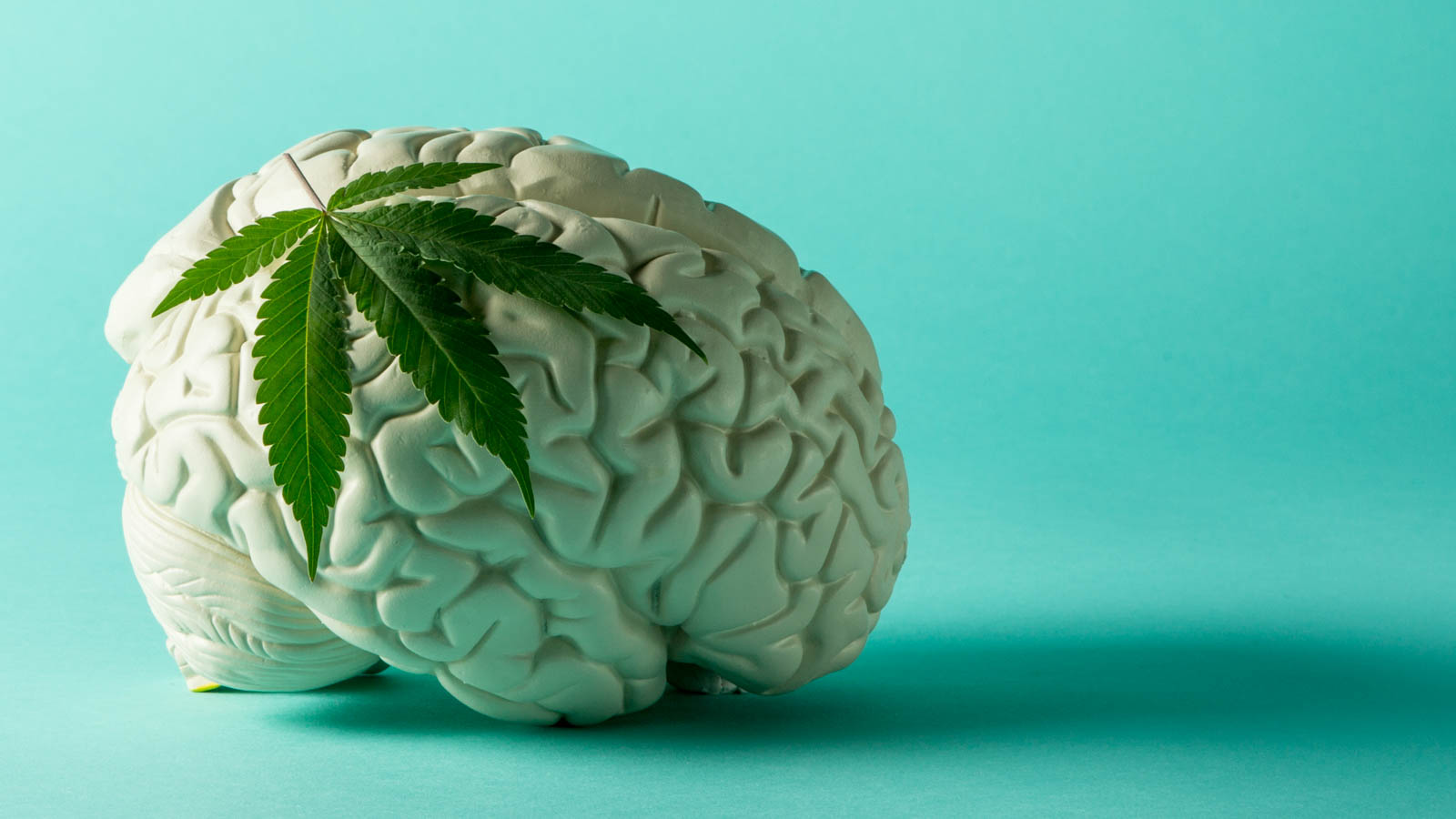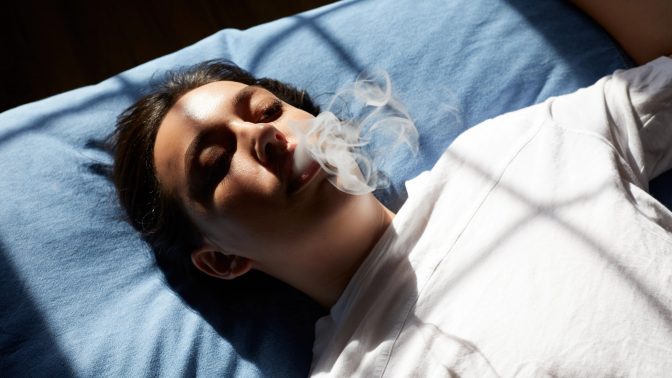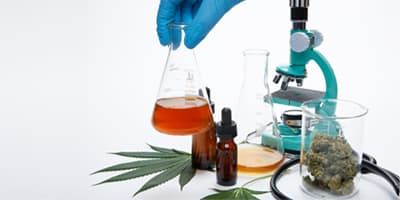Whether they know it, anyone who has ever consumed cannabis has sparked an interaction between cannabinoids and a network of receptors in the human body. But even the most seasoned cannabis connoisseur might not know how the relationship involving the plant's compounds and our cannabinoid receptors actually works. And, moreover, what physiological conditions affect the experience of each cannabis consumer?
In the first three installments of our “How Cannabinoids Work” series …
… we described the various paths and fates of cannabis molecules. Product, consumption method, metabolism, and the body's detoxification processes all affect bioavailability, the portion of the active ingredient that affects our bodies.
There are also three other factors that affect this interaction:
- The entourage effect
- The levels of the internal messengers that bind to the cannabinoid receptors (endocannabinoids)
- The availability of cannabinoid receptors
The Entourage Effect (No, Not the HBO Series)
The entourage effect is the synergistic effect of cannabis molecules in the body. It was first described by cannabis researchers Dr. Shimon Ben-Shabat and Dr. Raphael Mechoulam in a 1998 study that found a significant increase in activity of endocannabinoids in the presence of several newly identified molecules that seemed inactive. In fact, the endocannabinoids were active alone. With all the entourage of cannabinoids in tow, the endocannabinoids were highly active. In their study, Ben-Shabat and Mechoulam posited about the entourage effect: “[t]his type of synergism may play a role in the widely held (but not experimentally based) view that in some cases plants are better drugs than the natural products isolated from them.” The researchers concluded that further research was needed to fully describe these effects.

In a 2011 study published in the British Journal of Pharmacology, Dr. Ethan B. Russo of GW Pharmaceuticals observed how synergy between active and inactive ingredients in cannabis might work, identifying four ways in which they might affect things:
- Interacting with multiple targets simultaneously
- Making cannabinoids more bioavailable or soluble
- Having an anti-bacterial impact; and
- Controlling side effects, including psychoactive effects
These inactive – but evidently still effective – components not only impact the inhibition of the Cytochrome P450 enzymes, as were discussed in Part III, but also the body's greater physiological response.
Internal Messengers and the Competition Between Them them
The human body produces the endocannabinoids anandamide (AEA) and 2-arachidonyl glycerol (2-AG), both of which naturally bind to the cannabinoid receptors CB1 and CB2 to regulate functions involved in stress, appetite, sleep, the immune system, reproduction, energy balance, and metabolism. Cannabinoids, such as the commonly recognized THC, tetrahydrocannabivarin (THCV), and cannabidiol (CBD) compete with AEA and 2-AG for the same receptors.
In general, there are three types of interactions that take place with the CB1 receptor:
- Agonist reactions bind with a receptor to excite or increase a response
- Antagonist reactions inhibit a response by preventing the agonist from binding
- Inverse agonist reactions also inhibit a response, but do so by binding to the receptor and doing the opposite of whatever the antagonist was going to do.
Within all the cannabinoids naturally found in cannabis, only THC and THCV bind more strongly to the CB1 receptor than AEA and 2-AG. THC acts as a partial or full agonist, depending on the tissue and organ, and THCV as an antagonist.
While CBD binds poorly to the CB1 receptor, this compound can still block THC by occupying the receptor and preventing the binding of THC or AEA and 2-AG.
Under different physiological conditions in the same person, the body may generate different amounts of AEA and 2-AG. Stress, diet, pain and other factors may increase AEA, potentially altering outcomes even when the same product and dosage are consumed. For instance, after a 12-day restriction diet, 2-AG levels will significantly decrease in the brain, while a 24-hour starvation significantly increases 2-AG levels. It's likely that a person who is starving will need different amounts of cannabis to replicate the effect obtained by someone on a normal diet.
Elevated levels of AEA in athletes may play a role in physiological and mental conditions such as pain relief, sedation, anxiety inhibition and the phenomenon known as the “runner's high,” which has been reported as similar to the effect of THC consumption. In a study, 50 minutes of treadmill or stationary bicycle at 70–80% of maximum heart rate resulted in a significant increase of AEA and 2-AG in the blood tested immediately at the end of training. The direct impact of exercising on cannabis consumption was demonstrated in a two-week moderate exercise program for cannabis-dependent adults. The researchers found that cannabis cravings decreased during the exercise period, but increased once exercise was stopped.
Availability of Receptors
Changes in cannabinoid receptors can also affect the response caused by cannabinoids. A greater number of cannabinoid receptors can increase the potency and efficacy of treatment with THC or with a combination of THC, CBD, and terpenes.

In a 1993 study published in Neuroscience, researchers first reported a significant decrease in the levels of CB1 receptors in the midbrain area of patients who were suffering from Huntington's disease, meaning cannabis treatment may be less effective for these patients. In contrast, individuals who had neuropathic pain had an increased number of CB1 receptors, potentially allowing a better response to cannabinoid treatment. Similarly, individuals with certain forms of cancer, epilepsy, and schizophrenia also demonstrated a similarly significant increase in CB1 receptors, suggesting a need for further research on medical cannabis treatment for these conditions.
While the entourage effect is dependent on the chemical composition of the product consumed, the levels of endocannabinoids and the availability of the CB1 receptor is also affected by an individual's lifestyle and medical condition.
This series on “How Cannabinoids Work” has provided a biochemical perspective on the complexity that medical cannabis consumers are constantly facing. The questions of “What?” “How?” “How much?” and “When?” are all interconnected, and the answer varies from one individual to another. Even the same individual may require different products and dosages on different occasions.
Ultimately, approaches for individualizing medical cannabis treatment like pharmacometabolomics and precision medicine may hold the greatest promise for finding the best match of product and dosage for each individual.




